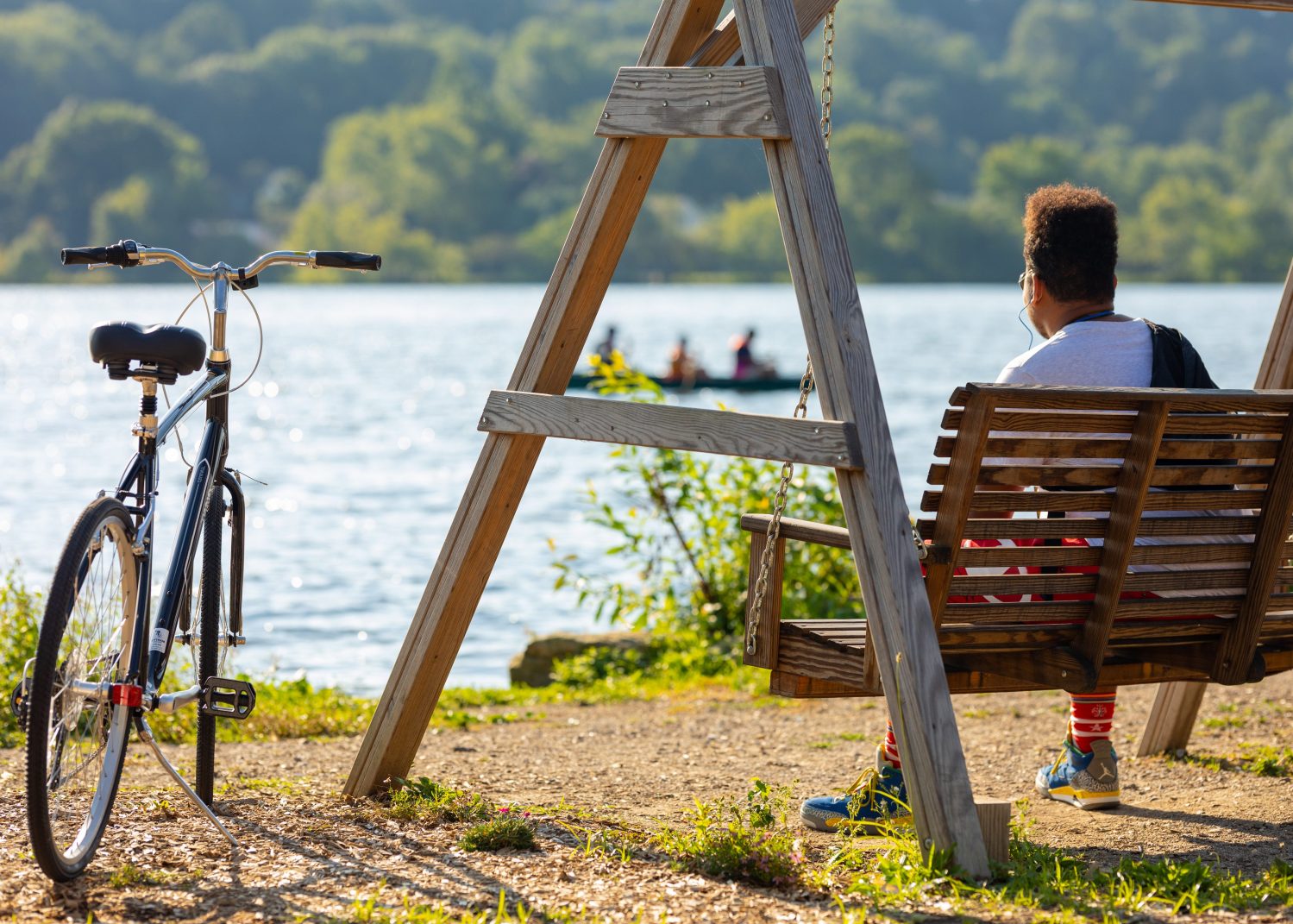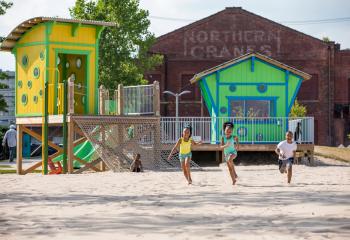Knight-commissioned report examines seven public spaces across the U.S. to identify what made them successful; offers recommendations for developing equitable and inclusive spaces beyond the pandemic.
MIAMI — (Mar. 24, 2021) — Public spaces that emphasized community engagement thrived during COVID-19 and became a vehicle for addressing racial equity issues in the community, according to a new report from the John S. and James L. Knight Foundation. Its key findings are timely and invaluable for local governments that are set to receive federal dollars, and funders from nonprofit and private sectors, as they seek to ensure that public spaces are equitable and inclusive for all residents.
Commissioned by Knight and conducted by Gehl, “Adaptive Public Space: Places for People in the Pandemic and Beyond,” evaluates the success of a number of public spaces currently operating and makes recommendations for improving these spaces in the future. Its insights are crucial for foundations, community advocates, public and private sector leaders and urbanists as they reimagine existing public spaces or build new ones that are engaging, welcoming and accessible to all walks of life, now and beyond the pandemic.
Leveraging a variety of pre-pandemic and mid-pandemic data, the Knight report evaluates seven public spaces operating across four cities: Philadelphia, Detroit, San Jose and Akron. They include neighborhood parks, natural green spaces and citywide destinations like waterfront retail hubs. Each has been in operation for several years, including during the pandemic, allowing Gehl to evaluate the spaces before and during COVID-19. Gehl conducted interviews, surveys and focus groups with residents; analyzed data collected online from visitors; and compiled existing and new observational data on each space.
Key findings include:
- Spaces that reflected resident needs, historic character and the arts had more regular visits from residents. Residents spent more time in public spaces where community engagement was built in from the start, and those who visited more often were more attached to their communities.
- Community participation and responsive engagement is vital for equitable spaces. Prototyping and pilots designed to engage communities of color allowed space organizers to build trust and enthusiasm with Black residents.
- Prioritizing community engagement throughout the lifecycle of a space led to ripple effects in the wider community. Embedding resident engagement from design through governance led to wider local capacity-building and community development beyond the project site.
- Flexible community-led design, inclusive processes and capacity-building helped sites develop sustainable operating models and adapt to changing conditions — including the pandemic. Community engagement enabled projects to pivot programming and provide safe venues for solo and social activity during COVID-19.
The report also offered recommendations for optimizing public space design:
- Create spaces with equity in mind. To address challenges around inclusion and trust among communities of color, planners should conduct outreach and fund community participation efforts from initial design to programming to governance.
- Design spaces with the input of communities that are impacted. To manage residents’ concerns about displacement, public space investments should be integrated into broader community development processes, with buy-in from all parties.
- Become financially sustainable. To create sustainable operating models, planners should create innovative and diversified means of funding, incorporating both foundation dollars and public revenue streams.
“Public spaces played a key role in helping us get through the pandemic by providing access to fresh air, recreation and each other in a safe way,” said Lilly Weinberg, Knight’s senior director for community and national initiatives. “With federal dollars flowing into cities, we must now leverage the momentum to build back responsive, community-led public spaces that can be a vehicle for communities to address equitable development. This report provides valuable insights on how to do that by giving residents a voice — from design to governance — of public spaces to ultimately be a platform to improve their quality of life.”
This latest report complements the findings of another Knight study released last year that examined what connects people to their communities. One of the largest surveys of its kind, “Community Ties: Understanding what attaches people to the place where they live,’’ presented several key findings, including that residents who feel they had easy access to recreational spaces had more positive feelings regarding their communities.
To be connected with Lilly Weinberg to discuss the report or the issue of public spaces more broadly, please contact Tony Franquiz at 202-374-5393 or [email protected].
###
About the John S. and James L. Knight Foundation
Knight Foundation is a national foundation with strong local roots. We invest in journalism, in the arts, and in the success of cities where brothers John S. and James L. Knight once published newspapers. Our goal is to foster informed and engaged communities, which we believe are essential for a healthy democracy. For more, visit kf.org.
Image (top) of Summit Lake Park, Akron by Tim Fitzwater.



